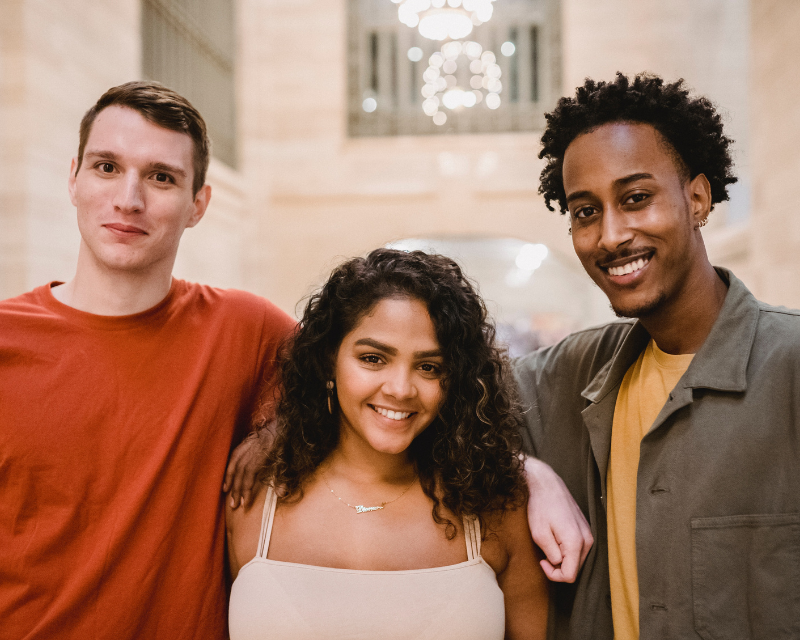What Survivor-Centered Work Looks Like

Guest Blog by Survivor-Advocate Annika Huff
Our stories are powerful. When I share my story, audience members often tell me that hearing someone's real-life experience, in their own words, changes the way they connect to the issue. This is not unique to the work of reducing and preventing human trafficking and supporting survivors. Any successful human rights work must be rooted and centered in the stories of the people that the movement is supposed to help. But listening to a person's story is not the same as putting survivors' lived experiences at the heart of the work an organization or movement is doing. And that is what is truly necessary to do the work of preventing and reducing human trafficking.
That might seem obvious, but it has not always been how the human rights world – including those in the anti trafficking space – has worked. Today, many organizations are still struggling with how to center survivor experience and expertise in meaningful ways that truly incorporate survivors into the fabric of social change movements.
Just listening to stories is not enough. In the anti-human trafficking movement, organizations have sometimes gotten stuck in this level of survivor involvement. It can feel tokenizing and even retraumatizing to survivors who are asked to share deeply personal experiences without the support they need. What that support looks and feels like is different for everyone depending on any number of factors.
Organizations looking to work with and learn from survivors must recognize that people just getting into anti trafficking work won't necessarily know the emotional, physical, or psychological effects that sharing their experiences will have on them until they actually do so. Survivors all respond to trauma differently, so what is helpful for one survivor could be harmful to another. On the flip side, sharing their personal experiences can be one of the most empowering steps a survivor can make; taking power back from the perpetrator and using a bad experience for the greater good.
To help ensure the experience of being involved in the movement is as effective and empowering as possible, organizations must have survivor-informed protocols and procedures around storytelling in place. These range from what kinds of supports are available before the event to thinking through how the survivors' stories – which are, after all, their intellectual property – are shared afterward.
When creating materials such as articles and videos, allowing the survivor to have the final say on whether that project airs or how experiences are depicted, is a survivor-centered practice. So is maintaining flexibility about the use of that content over time. As survivors heal and grow, their understanding of their traumatic experiences can change, and with those changes bring new interpretations or perceptions. Partnering with that survivor to develop new materials or re-share their experiences keeps the information modern and teaches others how survivors respond to trauma.
At the same time, it is vital to respect boundaries around trauma. In a world where so many of us are desensitized to violence and abuse, it makes sense that we want to be shocked and horrified into feeling something. But asking a person about the goriest or most painful details of their experience is both dehumanizing and, at the end of it all, not useful. Instead, anti trafficking advocates and survivors can work on ways to share their stories that include details that can help others moving forward – such as the vulnerabilities that they believe led them to be targeted by traffickers and victimized in the first place.
Finally, it is vital to the movement that the full diversity of survivor experiences be recognized, respected, honored and incorporated. Having many different survivors from a range of circumstances and experiences co-present or co-create materials, protocols, and policies is imperative to creating healthy and whole environments for the diversity of survivors who are receiving services as they exit their human trafficking experience.
Because in the end, it is survivors who know best what survivors have to offer and how important it is to the world that they have the tools they need to realize their fullest potential. The anti-trafficking movement can focus on the resilience and the positive attributes that that person has even after something as traumatic as human trafficking happens in their lives. Survivors are mothers, fathers, sisters, and brothers. Survivors are lawyers, authors, politicians, nurses, and have many other career paths. They are intelligent, strong, kind, and uniquely amazing people, and this resiliency should be shared in the stories too. The stories that are narrated need to humanize and honor survivors. As the work continues, it's our story and our legacy that becomes part of the fabric of the anti-trafficking movement: Survivors and allies hand-in-hand to help stop human trafficking.
This “Eyes on Trafficking” story is reprinted from its original online location.
 ABOUT PBJ LEARNING
ABOUT PBJ LEARNING
PBJ Learning is a leading provider of online human trafficking training, focusing on awareness and prevention education. Their interactive Human Trafficking Essentials online course is used worldwide to educate professionals and individuals how to recognize human trafficking and how to respond to potential victims. Learn on any web browser (even your mobile phone) at any time.
More stories like this can be found in your PBJ Learning Knowledge Vault.
EYES ON TRAFFICKING
This “Eyes on Trafficking” story is reprinted from its original online location.
ABOUT PBJ LEARNING
PBJ Learning is a leading provider of online human trafficking training, focusing on awareness and prevention education. Their interactive Human Trafficking Essentials online course is used worldwide to educate professionals and individuals how to recognize human trafficking and how to respond to potential victims. Learn on any web browser (even your mobile phone) at any time.
More stories like this can be found in your PBJ Learning Knowledge Vault.
